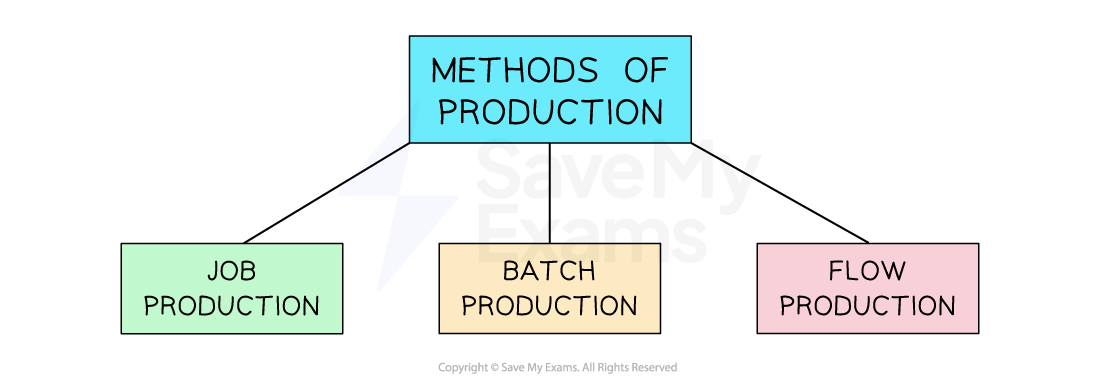An Introduction to Production Methods
- Businesses can organise their production processes in a variety of ways
Diagram: Methods of Production

The main methods of production
- The method of production used by a business will depend upon a number of factors
- The level of output required to be produced
- The nature of the product
- Whether the product is standardised or customised
- The level of automation used in production





